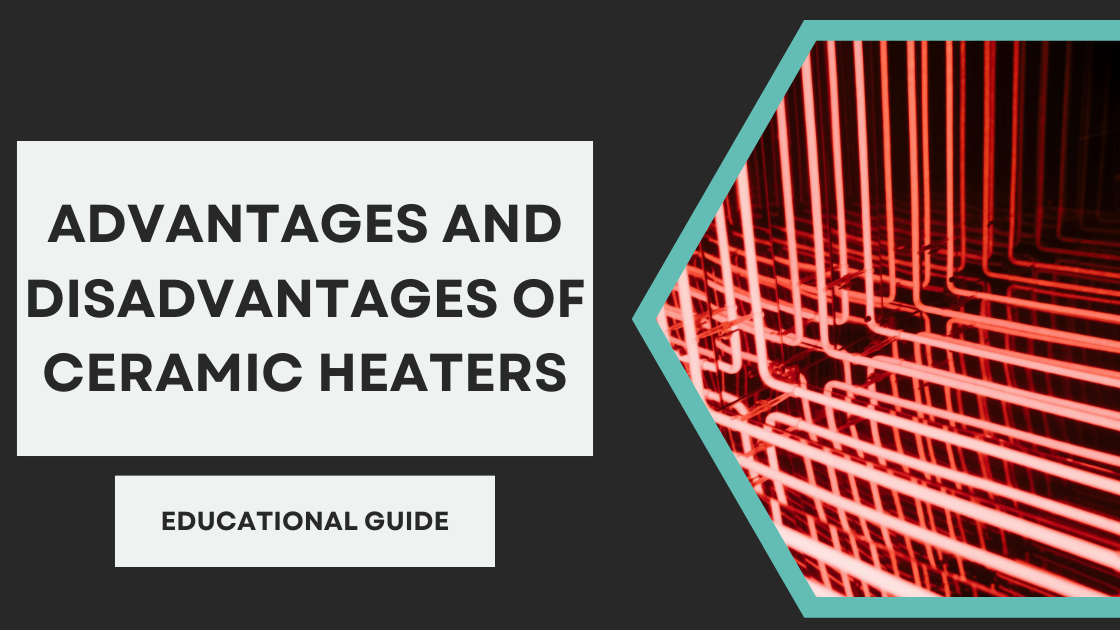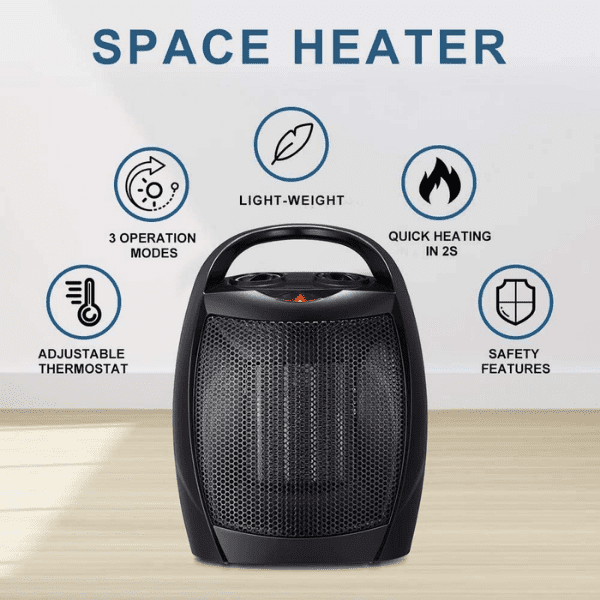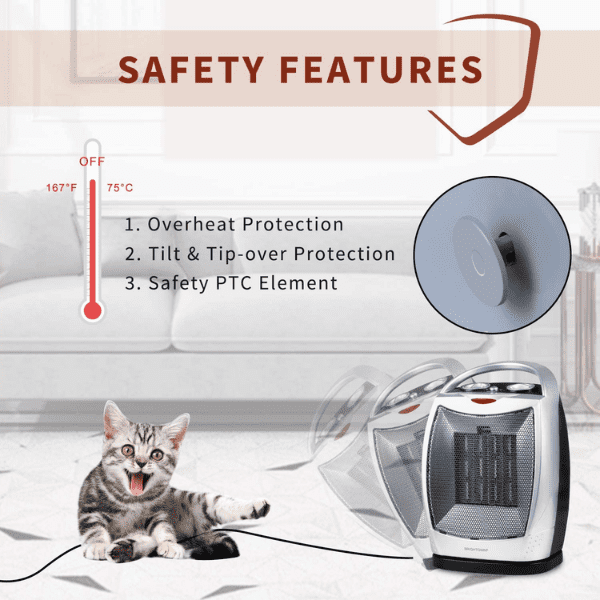
What Is a Ceramic Heater?
Ceramic heaters are space heaters that generate heat through ceramic heating elements with a positive temperature coefficient. Portable ceramic heaters are generally used to heat small areas, making them comparable to metal-element fan heaters.
How Does a Ceramic Heater Work?
The ceramic heater operates on the principle of resistive heating. In simple terms, electrical currents are passed through conductors to produce heat.
Ceramic plates are used as the conductor in this case. The ceramic conducts heat very well and offers high resistance to the current. Due to the resistance, a current struggles to pass through the ceramic, and in doing so, it produces more heat.
Heat is conducted by coils of metal attached to ceramic plates. The plates absorb the heat and release it into the air.
Ceramic heaters have some great benefits. They are lightweight and generate a lot of heat from a small box.
And they’re not just for your home. Consider putting them in your camper, garage, or outside office or studio.
They come in all sorts of models, and some will also offer cool air and hot air, which is excellent as an all-year-round unit to meet your needs for anything from home to business. That’s why reading our Ceramic Heaters Advantages Disadvantages can help you choose the best heater for your needs.

Ceramic Heaters Advantages
There are many advantages to ceramic heaters. Let’s look at a few.
- Saves Electricity: Ceramic heaters save energy. Ceramic material is heated to a specific temperature, and once the temperature is reached, the electric current is shut off, utilizing the energy stored in ceramic. This means they require less energy to generate more heat, so they can help you save money on your electric bill.
- Accurate Heating: When the ceramic heater is used with a fan, the airflow can be aimed precisely at where you need hot air. Furthermore, the heater’s fan helps to evenly distribute warm air throughout the room.
- Lightweight & Portable: It is one of the most portable heating options to use ceramic space heaters. Transporting them from room to room in your house is easy because they’re so small and light.
- Inexpensive: Heaters that operate efficiently can often be more expensive to purchase. However, ceramic heaters are much cheaper to buy and run, making them a win-win situation for both parties.
- Safe Heating: Ceramic heaters have a lower risk than other types of heaters. The safest option on the market is ceramic heaters, especially when paired with additional safety mechanisms. Your ceramic heater may also have the following safety features:
- Safe tip-over feature: This feature automatically turns the heater off in case it falls or tips over.
- Safe to Touch: The built-in feature prevents the outer body of the heater from becoming too hot to touch.
- Overheat protection: The heater shuts off if it becomes overheated. This can prevent a fire from originating because of overheating.

Ceramic Heaters Disadvantages
Ceramic heater disadvantages may include:
- Noisy: You may be distracted from getting a peaceful night’s sleep by the fan rotation.
- They don’t work well for large spaces: Since the heater can only heat small spaces, using it for larger rooms would be inefficient.
- Solid objects can prevent heat transfer: As heat is transferred through radiation, solid objects like furniture or clothing can prevent heat transfer.
- They aren’t suitable for people with breathing difficulties: Ceramic heaters may lower air quality and be a problem for sensitive individuals.
- The heater needs time to warm up: It takes time for the heater to transfer the heat to the room.
Check out our article on 5 Best Lasko Ceramic Heaters
Frequently Asked Questions about Ceramic Heaters
Ceramic vs fan-forced heater. Which is better?
The difference between a ceramic heater and a fan heater is that a ceramic heater uses a ceramic plate to heat areas, while the fan heater uses a filament. Ceramic heaters retain heat, so they provide more warmth than fan heaters. However, they both use fans.
How Much Electricity Are Ceramic Heaters Consuming?
A ceramic heater does not use a lot of electricity compared to an electric fan heater. It is a more efficient way to heat the environment and can provide warmth for up to ten hours without requiring additional power or recharging.
To find out how much an electric ceramic heater might cost to run, check out our article here.
Are ceramic heaters capable of emitting carbon monoxide?
No. When used correctly, ceramic heaters do not emit carbon monoxide into the air. Even so, there is always the possibility that carbon monoxide can be released if appliances such as an oven or gas stove in your kitchen are defective and release this poisonous gas into the air.
Final Thoughts
There are many advantages and disadvantages to using a ceramic heater. Weigh the pros and cons of a ceramic heater to find one that suits you best.
Check Out WhatFans Other Fan Articles & Reviews below –
5 Best Fan Heater Combo Reviews
How Much Electricity Does A Space Heater Use?
Dyson HP02 Pure Hot and Cool Link Reviews
Heat Storm HS 1500 PHX Wifi Review